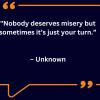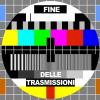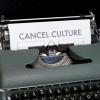Dear Neil (if I may)-
When I was a kid, I had a coloring book with pictures of the possible jobs I could have when I grew up – fireman, cook, doctor and so forth. One page had a picture of scientist. I can still see it – classic and stereotypical image of a guy in a lab coat holding a beaker. Anyway – I liked that one picture so much, I refused to color on it. I was only about 8 but I already wanted to be a scientist.1
So, like you, I love science.
I grew up during the last decades of the Cold War. I still remember the fear and anxiety I felt when I watched The Day After in 1983. I also still remember the televised town hall meeting that ABC broadcast after the show ended. Among all the voices I heard that night, the one I trusted most was Carl Sagan.
As a teen, Carl Sagan was my hero. His was a voice of calm, reason, and compassion at a time when the adult world seemed out of control. I loved Cosmos.
This brings me to my disappointment with you – in a recent issue of the weekly newspaper supplement Parade, you made some remarks about scientists. To wit – you said, “You will never find scientists leading armies into battle. You just won’t. Especially not astrophysicists…”
I don’t wish to pile on you here, but your statement is simply wrong. Consider just one university — Caltech. Its Physics Department was entirely militarized during World War Two and churned out over 1 million of bombardment rockets. Caltech’s Willy Fowler (Nobel Prize, 1983) did pioneering work on nuclear reactions in stars; he also led a secret 1951 study to promote the use of tactical nuclear weapons in the event of a Soviet attack. Speaking of nuclear weapons – J. Robert Oppenheimer did astrophysics. So did Hans Bethe (Nobel Prize, 1967), Stirling Colgate, and scores of others who also helped design nuclear weapons. On the other side of the Iron Curtain, there was Yakov Zel’dovich (AAS Bruce Medalist) who made major contributions to astrophysics – and to designing weapons of mass destruction for a murderous totalitarian regime. Some might say this isn’t the same as scientists leading armies into battle. Well, chemist Fritz Haber took the lead in introducing poison gas at the front during World War One.2
Now, perhaps, you were trying to make a larger point about the positive role that scientists play in contemporary society, a role that helps counterbalance the irrational forces of religious intolerance and superstition. I’m with you there. Like I said, like you, I love science.
But what really distresses me is that your statement is a total disservice to Carl Sagan’s career and beliefs. Sagan, perhaps more than other scientists of his generation, understood and witnessed how his fellow scientists – especially physicists – had contributed to the arms race. We see this in his warnings about nuclear winter and in his protests of the arms race. Sagan used Cosmos as a warning for how science – as wonderful as it can be – can also be an awful awesome tool when misused or applied without any sense of humanistic temper.
So – as you assume Carl Sagan’s mantle with the re-launching of Cosmos, I’d like you to approach this with some humility or at least some historical awareness. The anti-science forces get their power through their manufacture of doubt, their denial and ignorance of the facts. Don’t be like them. As Spider Man says, “With great power comes great responsibility.” Cosmos and its promotion is going to give you a big bully pulpit. Use it wisely. Use it like Carl Sagan would have.
Sincerely,
Patrick McCray
















